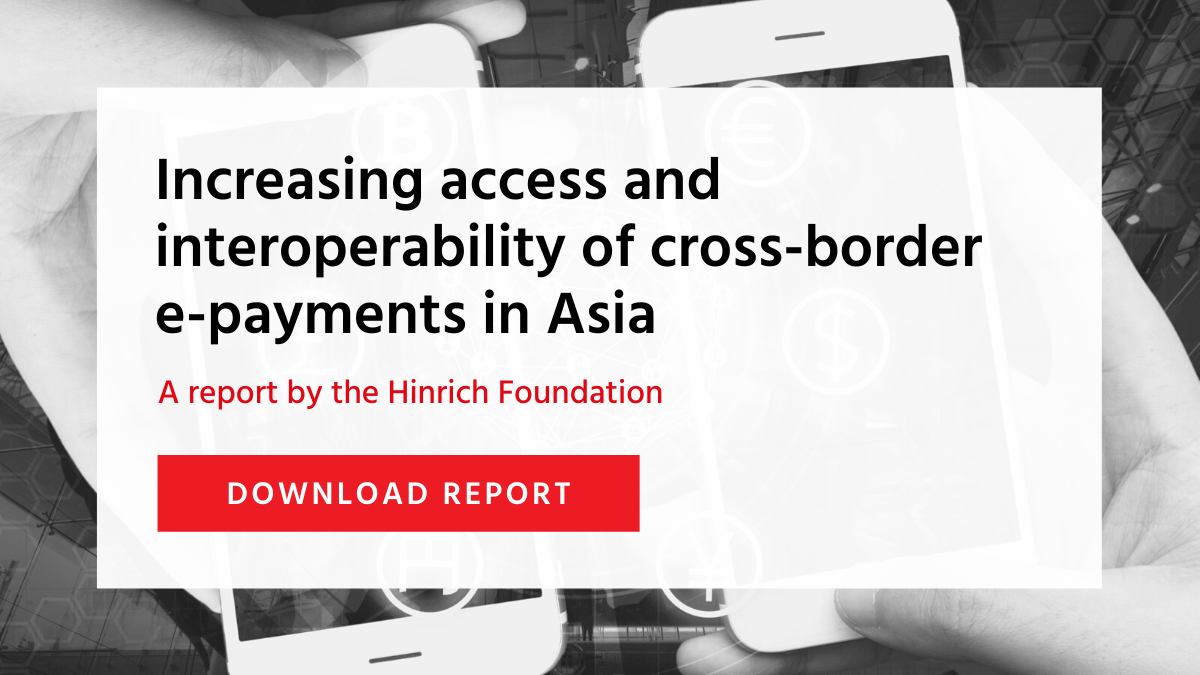Published 28 June 2022
The internet’s borderless culture of innovation has fostered the development of unregulated digital assets. The boom of cryptocurrencies, the uptake of CBDCs, and the Ukraine-Russia conflict are raising important questions around the political neutrality of the infrastructure for global trade settlement. By integrating on-net and off-net financial networks through regional arrangements such as RCEP, could we avoid the creation of spliternets?
Manufacturers in East Asia now have the option to settle trade under three major trade frameworks: the Regional Comprehensive Economic Partnership (RCEP), the Comprehensive and Progressive Agreement for TransPacific Partnership (CPTPP) and the Indo-Pacific Economic Framework. Will they continue to use the US dollar as the de facto unit of account for financial settlements, or will they choose cryptocurrencies like Bitcoin, or Central Bank Digital Currencies (CBDCs) such as China’s e-CNY?
If life follows art, it is not hard to imagine a splintered world and political economy akin to George Orwell’s dystopia in 1984—a world divided into three global networks belonging to the states of Oceania, Eurasia and East Asia. In reality these could be divided by major CBDCs—a digital dollar, a digital euro and a digital yuan—with the digital ‘gold’ of Bitcoin perhaps serving as the currency for ‘disputed territories’. The Japanese art of joining broken bowls with gold, kintsugi, comes to mind.
In the early 2000s online and offline trade settlements were conducted using the US dollar, the world’s reserve currency, with online trade dependent on traditional financial settlement networks. Today however, there are different ways to settle online trade using units of account that are native to the internet. Since the invention of cryptocurrencies trade can be settled completely on-net—entirely on the internet—not via highly regulated offnet financial networks.
There are now over 19,000 cryptocurrencies. So far, these volatile and speculative units of account can be exchanged on over 500 digital exchanges. These exchanges enable conversion to other digital assets, such as non-fungible tokens—financial assets consisting of digital data stored in a blockchain—and stablecoin, less volatile units of account with prices linked to a commodity or fiat currency.
The internet’s borderless culture of innovation has fostered the development of unregulated digital assets. This has prompted the Biden administration in the United States to issue an executive order promoting their responsible development and the European Union to develop the Markets in Crypto-Assets regulation. And the US$83 billion collapse of the stablecoin TerraUSD serves as a stark reminder that rapid financial innovation may have unexpected consequences.
Nevertheless on-net financial innovations continue. The opportunity to invent new online economies and their units of account is too large to ignore. Indeed the venture capitalists that created today’s internet, appear unfazed by TerraUSD’s collapse and continue to raise decentralised finance crypto funds. In May 2022, for example, Andreessen Horowitz raised US$4.5 billion for Crypto Fund 4 bringing its total raised for investment in cryptocurrencies to US$7.6 billion.
Innovation and cross-border experiments are also occurring among off-net financial networks. Central banks have been leading the charge, responding to private innovation by introducing their own CBDCs—digital representations of existing central bank liabilities. CBDCs currently take two forms: wholesale liabilities between a central bank and commercial financial institutions, and retail liabilities between a central bank and its citizens.
As of May 2022, 90 per cent of central banks were exploring CBDCs. There are no less than 87 ongoing CBDC experiments led by central banks, with a digital euro expected in 2026, the United States considering the implications of a digital dollar and India announcing plans to move ahead with a digital rupee. Nine countries have launched digital currencies while 14 others—including China and South Korea—are making rapid progress with their pilot programs.
Although CBDCs are mainly envisaged for domestic use, experiments are underway to conduct cross-border payments via multiCBDC arrangements. One example is the mBridge digital currency portal, a collaboration by the BIS Innovation Hub Hong Kong Centre with central banks in Hong Kong, Thailand, China and the United Arab Emirates.
Current discourse on network infrastructure is dominated by the question of whether CBDCs and their cross-border equivalents will dominate trade under regional trade frameworks, or if cryptocurrencies and hybrid CBDC–crypto approaches will emerge as the front runner for on-net trade. But politicising and polarising this issue could force global networks, like the Society for Worldwide Interbank Financial Telecommunication (SWIFT) or the internet, to split into incompatible networks, or splinternets.
The Ukraine–Russia conflict raises important questions around the political neutrality of on-net and off-net infrastructure for global trade settlement. SWIFT’s ban on Russian banks and the use of cryptocurrencies to fund aid or subvert financial sanctions has fuelled debate about crypto’s potential to challenge monetary sovereignty and the risks associated with currency substitution. To circumvent such risk, the Central Bank of Russia has already established the System for Transfer of Financial Messages. Similarly, the People’s Bank of China has built its own CrossBorder Interbank Payment System.
It is increasingly likely that the politicisation of global trade will force East Asian business to choose between on-net units of account that risk stateled internet shutdowns, or off-net options that could lead to financial sanctions. But there is an opportunity for regional arrangements like RCEP to build politically neutral trade settlement mechanisms that avoid the use of any CBDC.
Instead, given progress in current on-net innovation, it could design a politically neutral unit of account that could be used for on-net and off-net settlements. By integrating on-net and off-net financial settlement networks, there are ways to avoid creating splinternets and build a global and inclusive future for digital finance.
© The Hinrich Foundation. See our website Terms and conditions for our copyright and reprint policy. All statements of fact and the views, conclusions and recommendations expressed in this publication are the sole responsibility of the author(s).







